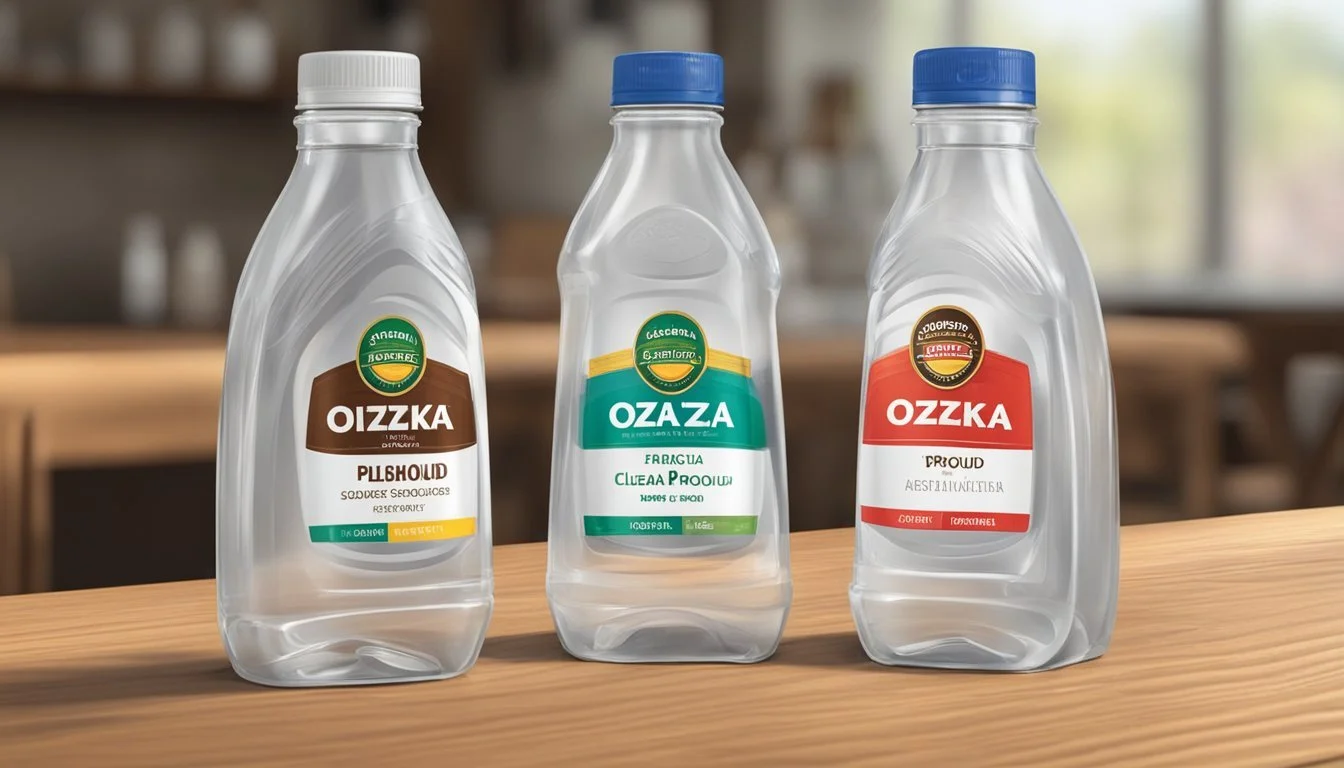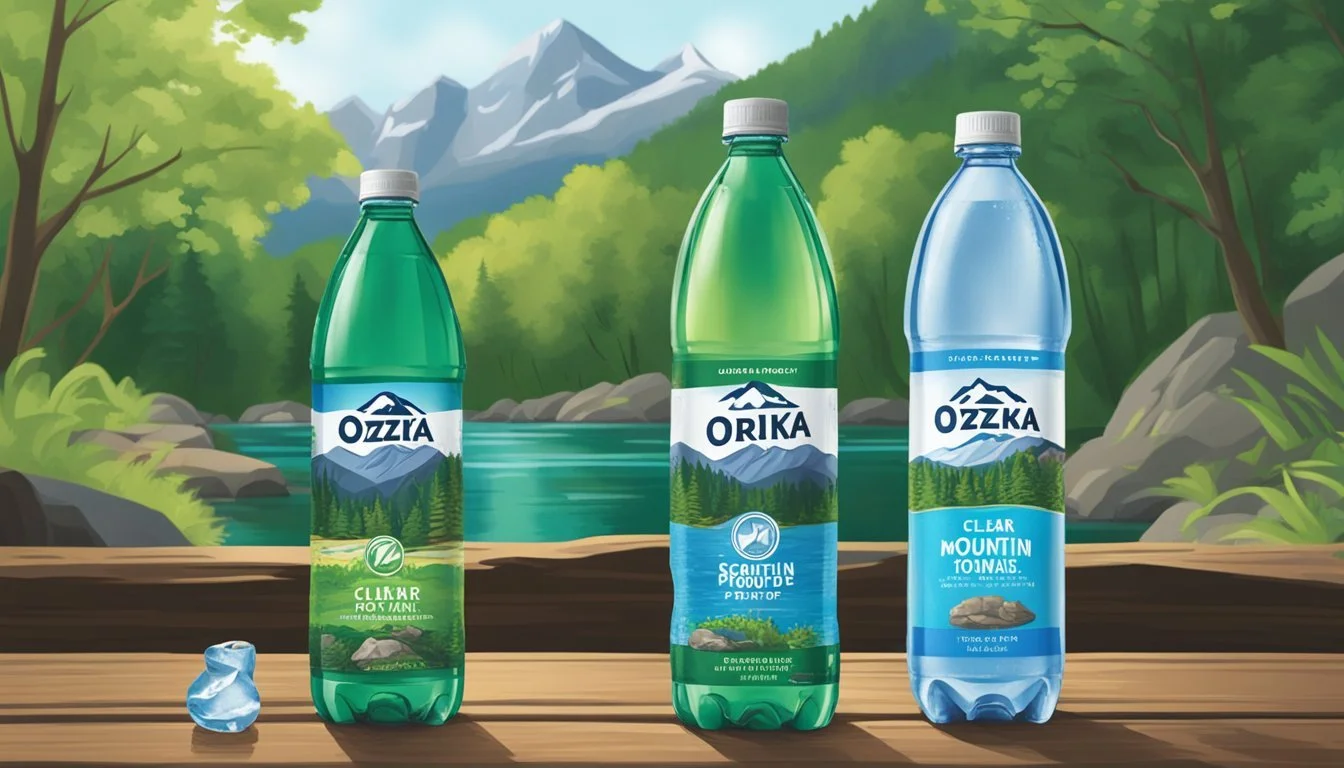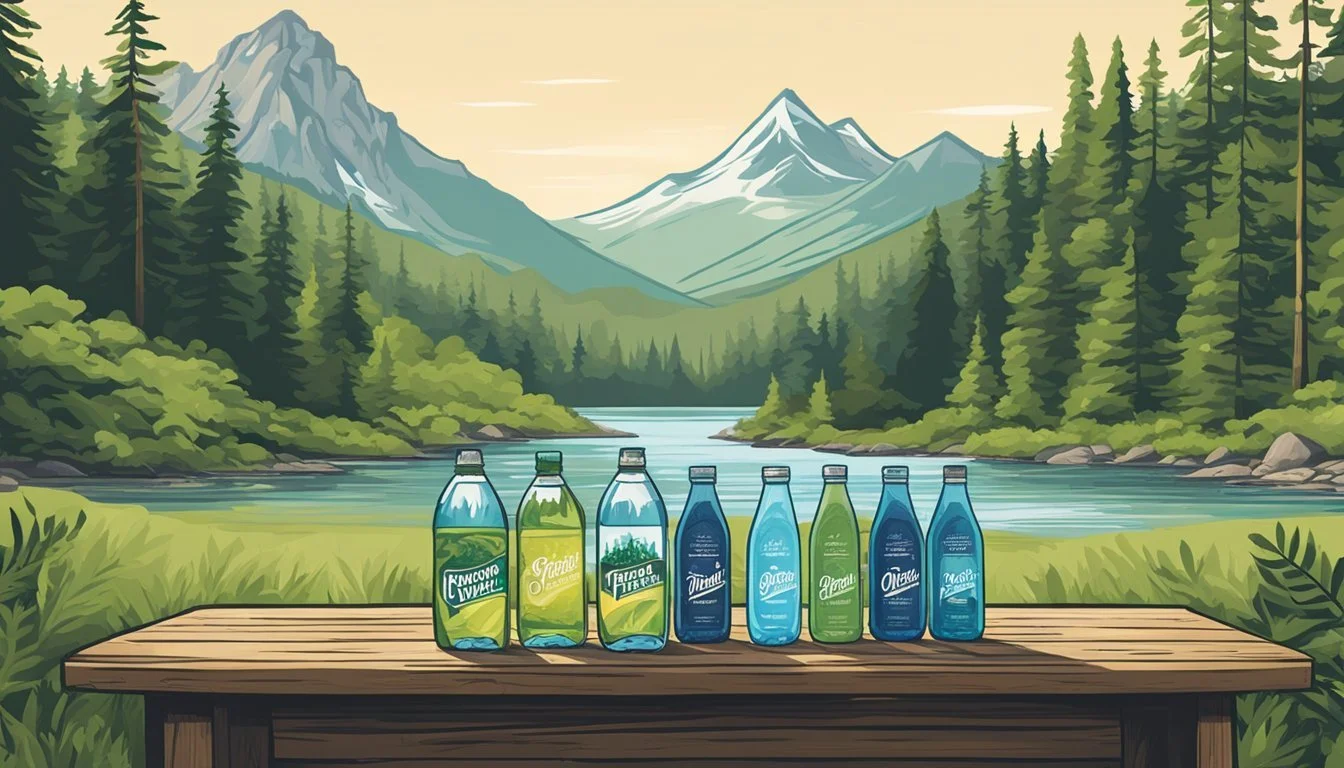Ozarka vs. Proud Source
Comparing the Best Bottled Waters
Choosing the right bottled water can be a crucial factor for those who prioritize hydration and taste. Ozarka, known for sourcing its water from Texas, offers a unique, regional flavor that many consumers find appealing. Conversely, Proud Source prides itself on its environmentally friendly packaging and pristine water sources from the Rocky Mountains.
For those seeking a regional spirit and a taste of Texas, Ozarka might be the preferred option. However, if sustainability and purity are major deciding factors, Proud Source stands out with its eco-friendly aluminum bottles and high-quality water. Both brands offer distinct benefits, making the choice largely dependent on personal priorities.
When comparing these two brands, it's essential to consider not just the taste and source but also the packaging and environmental impact. Readers will find detailed analysis in the following sections to help make an informed choice based on their hydration needs and values.
The Essentials of Bottled Water
Bottled water is more than just a convenience; it can vary greatly in taste, source, and health benefits. Understanding these differences can help consumers make informed choices.
Water Source and Origin
Spring Water is often considered premium due to its natural sourcing from underground springs. Brands like Ozarka and Proud Source emphasize their commitment to obtaining water from natural spring sources. Ozarka sources its water locally from Texas springs, while Proud Source prides itself on using natural springs from sustainable locations. The origin of the water can affect both taste and mineral composition, making it essential to know where your water comes from.
Mineral Content and Health Benefits
The mineral content in bottled water varies depending on its source. Natural spring water generally contains a range of minerals like calcium, magnesium, and potassium.
Ozarka: Known for its rich mineral content due to its Texan spring sources.
Proud Source: Also contains essential minerals, with specific attention to retaining natural electrolytes for health benefits.
These minerals not only enhance the taste but also provide health benefits like improved hydration and bone health.
Taste Profiles Across Brands
The taste profile of bottled water is influenced by its mineral content and source.
Ozarka: Offers a clean, crisp taste attributed to its unique mineral composition from Texas springs.
Proud Source: Known for its refreshing and smooth taste, a result of its natural filtration through rocky terrain.
Taste testing different brands can help identify personal preferences, ensuring satisfaction with each sip.
Purity and Filtration Processes
Purity is a critical factor for bottled water consumers. Both Ozarka and Proud Source ensure high standards through advanced filtration processes.
Ozarka: Utilizes a multi-step filtration process to remove impurities while retaining beneficial minerals.
Proud Source: Employs natural filtration through underground rocks to maintain cleanliness and enhance mineral content.
Understanding these filtration methods can reassure consumers about the safety and quality of their bottled water.
Understanding Water Quality Standards
Water quality standards are crucial in ensuring that bottled water meets safety and health guidelines set by regulatory bodies. These standards consider various factors such as regulatory compliance, impurity levels, and pH balance.
FDA Regulations and Safety Standards
The FDA regulates bottled water as a food product, setting strict safety standards. These regulations mandate regular testing for microorganisms, chemical contaminants, and other impurities. Compliance with these standards ensures that bottled water is safe for consumption.
Bottlers must adhere to the Good Manufacturing Practices (GMP). They are required to conduct periodic sampling and testing from both the source and final products. This rigorous process helps maintain high-quality standards and consumer safety.
Total Dissolved Solids and Impurities Assessment
Total Dissolved Solids (TDS) measure the combined content of all inorganic and organic substances in water. A lower TDS level often means purer water. Regulatory bodies recommend a TDS level below 500 mg/L for drinking water.
Impurity assessment involves checking for heavy metals, pesticides, and microbial contaminants. Consistent monitoring and meeting established thresholds help maintain water purity. Brands like Ozarka and Proud Source must provide annual water quality reports to demonstrate compliance with these standards.
pH Level Importance
pH levels in bottled water can affect both taste and health. The pH scale ranges from 0 to 14, with 7 being neutral. The FDA recommends a pH range of 6.5 to 8.5 for safe consumption.
Water with a balanced pH ensures that it is neither too acidic nor too alkaline. Consumers often prefer water in this pH range for its neutral taste and minimal impact on body acidity. Assessing and maintaining ideal pH levels is a key aspect of water quality control.
Comparing Ozarka and Proud Source
Ozarka and Proud Source present distinct approaches to bottled water, appealing to different consumer preferences. Their backgrounds, product offerings, and consumer reviews highlight what makes each brand unique.
Company Background and Ethos
Ozarka sources its water from springs in Texas. With a legacy of providing natural spring water for over a century, it emphasizes local sourcing and sustainability. Proud Source aims to deliver pristine alkaline water from the Rocky Mountains, emphasizing environmentally friendly practices through the use of recyclable aluminum bottles and a commitment to reducing plastic waste.
Ozarka focuses on regional pride and community connections, while Proud Source highlights ecological responsibility and broader environmental impact.
Product Range and Unique Offerings
Ozarka offers a variety of bottle sizes, typically in convenient plastic packaging. Its product line includes natural spring water, appealing to those who prefer traditional bottled water options.
Proud Source differentiates with its sleek aluminum bottles, providing alkaline water with a distinct mineral composition. Available mostly in single-serve formats, Proud Source markets itself towards health-conscious and eco-minded consumers.
Ozarka’s range is practical and accessible, while Proud Source’s offerings target niche markets with eco-friendly and health-centric preferences.
Consumer Perceptions and Reviews
Consumers appreciate Ozarka’s crisp taste and regional authenticity. Some reviews highlight the accessibility and trust in the brand's long-standing presence in the market. However, the plastic packaging has received criticism from environmentally aware consumers.
Proud Source garners praise for its commitment to sustainability and the quality of its alkaline water. Reviews often mention the refreshing taste and premium feel due to the aluminum bottles. Yet, the higher price point and limited availability might deter some potential buyers.
While Ozarka is favored for its reliability and heritage, Proud Source stands out for its modern approach to packaging and environmental ethics.
Environmental and Sustainability Considerations
This section explores the environmental and sustainability efforts of Ozarka and Proud Source. It delves into their bottling processes, sustainability practices, and the materials used for packaging.
Bottling Processes and Environmental Impact
Ozarka sources its water from springs in Texas, utilizing a traditional bottling process. The company primarily uses plastic bottles, contributing to environmental issues if not responsibly managed.
Proud Source, on the other hand, uses aluminum bottles, which are more sustainable. Aluminum can be recycled indefinitely without losing quality, reducing its environmental footprint. Proud Source’s focus on minimal water waste during the bottling process further underscores its eco-friendly approach.
Sustainability Practices of Water Brands
Ozarka has implemented several sustainability efforts, such as reducing the weight of their plastic bottles to minimize raw material use. They also promote recycling initiatives, encouraging consumers to recycle.
Proud Source emphasizes sustainability at its core. The brand aims for a carbon-neutral production process, reducing greenhouse gas emissions. Proud Source actively invests in renewable energy for its operations, setting a high standard for others in the industry.
Packaging Materials and Recycling Efforts
Ozarka's bottles are primarily made of PET plastic, which is recyclable but often criticized for its environmental impact. They have increased the use of recycled plastic content in their bottles, but challenges remain in managing plastic waste effectively.
Conversely, Proud Source opts for aluminum packaging. Aluminum’s high recycling rate and reuse potential significantly mitigate environmental damage. The brand’s commitment to using recyclable materials goes beyond the bottles, extending to labels and packaging, ensuring a comprehensive recycling approach.
Assortment of Bottled Water on the Market
When examining the variety of bottled water available, it becomes evident that both the type of water and the brand play crucial roles in consumer choices. Key aspects such as the specific source, whether it's spring or purified, and the brand's market positioning affect popularity and price.
Types of Bottled Water
Bottled water mainly falls into two broad categories: natural spring water and purified water. Natural spring water, like that from Evian and Ozarka, is sourced directly from natural springs and typically retains its mineral content. Purified water, such as Dasani and Aquafina, undergoes a purification process to remove impurities and may have added minerals for taste.
Mineral water, like San Pellegrino, is yet another category, distinguished by its naturally occurring minerals, while artesian water, such as Fiji, comes from the aquifer. Distilled water is also available but less common for drinking due to its lack of minerals.
Premium Brands Versus Everyday Choices
Premium brands like Voss, Fiji, and Evian position themselves as luxury items with a focus on purity and unique origins. For instance, Fiji water is sourced from an artesian aquifer in the islands of Fiji, and Voss touts its Norwegian origins and sleek packaging. These brands are often found in upscale markets and restaurants, commanding higher price points.
Everyday choices, including Ozarka, Aquafina, and Dasani, tend to be more accessible, both in price and availability. They are commonly found in grocery stores and convenience stores, often sold in bulk. These brands focus on offering reliable hydration at an affordable cost, making them popular for daily consumption.
Personal Experience and Preference
When choosing between Ozarka and Proud Source, the decision often hinges on individual taste and specific hydration needs. Both brands offer unique qualities that may cater to different personal preferences and health considerations.
Taste and Palate Variability
Ozarka is known for its crisp and refreshing taste, sourced from springs in Texas. Proud Source, on the other hand, offers a clean, slightly mineral taste, thanks to its Idaho and Montana origins.
Personal preference plays a significant role here. Some may prefer the distinct southern flavor of Ozarka, while others might find Proud Source's mineral notes more appealing.
Consumers report that Ozarka's taste is more neutral and less pronounced. This can be ideal for those who prefer a subtle water profile. Proud Source, with its naturally occurring minerals, provides a unique, slightly metallic finish that appeals to those who enjoy a more complex flavor.
Hydration and Personal Health Considerations
When it comes to hydration, both Ozarka and Proud Source offer pure, natural spring water. Each brand prides itself on high-quality water that supports bodily health.
For those focusing on their daily water intake, both brands deliver refreshment and hydration efficiently. Ozarka is praised for its affordability and availability in larger quantities, making it convenient for regular use.
Proud Source, packaged in recyclable aluminum bottles, appeals to the environmentally conscious consumer. Its packaging ensures the water remains cool and fresh longer.
From a health perspective, some individuals appreciate the mineral content of Proud Source, which can offer added benefits like replenishing electrolytes naturally. Conversely, those who prefer a straightforward hydration solution without added minerals might lean towards Ozarka.
Behind the Scenes: The Bottled Water Industry
The bottled water industry is a massive market with substantial influence from major beverage companies. Investigative journalists have also shed light on industry practices, while organizations like the International Bottled Water Association provide insights into industry standards.
Influence of Major Beverage Companies
Major companies such as Nestle and Coca-Cola dominate the bottled water market. Nestle owns brands like Pure Life, which positions itself as affordable and high-quality. Coca-Cola owns brands like Dasani, marketing heavily to ensure global reach.
These corporations wield significant power over water sources and distribution methods. For example, they often source water from regions with abundant fresh supplies. Their marketing strategies influence consumer perceptions, emphasizing purity and health benefits.
An Analysis by Investigative Journalists
Investigative journalists play a crucial role in exposing industry practices. Reports have revealed issues such as over-extraction of water from local sources and the environmental impact of plastic waste. They examine the ethics of water acquisition in drought-stricken areas.
Journalists also highlight the disparity between the actual cost of sourcing water and the retail price. This scrutiny adds pressure on companies to adopt more sustainable practices and be transparent about their operations.
International Bottled Water Association Insights
The International Bottled Water Association (IBWA) sets standards for quality and safety in the industry. They ensure that member companies comply with rigorous guidelines for water purity. The organization also promotes the benefits of bottled water as a healthy and convenient option.
IBWA's regulations address water sourcing, bottling practices, and environmental responsibilities. They advocate for recycling programs and efforts to reduce plastic use. This helps maintain consumer trust and supports sustainable growth within the industry.
Making an Informed Decision
Consumers looking to choose between Ozarka and Proud Source need to consider several factors, including water quality, convenience, and cost. Reviewing these elements can help make an informed decision that aligns with individual needs.
Evaluating Water Options for the Consumer
When comparing Ozarka and Proud Source, water quality is paramount.
Ozarka sources its water from springs in Texas, boasting natural spring water. This can appeal to those favoring a local and natural source. Its pH level typically hovers around 7.0, which is neutral and ideal for drinking water.
Proud Source emphasizes sustainability and health. Sourced from Rocky Mountain springs, it aims to provide pure, clean water. This focus might attract consumers who prioritize environmental sustainability along with hydration.
Taste can vary between brands. Ozarka water often has a subtly crisp taste, whereas Proud Source might have a different mineral profile, influencing its flavor.
Determining the True Cost of Quality and Convenience
Cost is a critical factor in determining which bottled water brand better fits consumer needs.
Ozarka is frequently available in larger quantities, potentially reducing the cost per bottle. Its pricing can vary by region due to local sourcing. This variability might offer budget-friendly options, especially in Texas.
Proud Source positions itself within the premium market, focusing on sustainable packaging and health benefits. This can lead to higher prices, but may justify the cost for environmentally conscious consumers.
Convenience of access also matters. Ozarka’s distribution in larger quantities can be a practical choice for families or frequent users. Proud Source, with its eco-friendly approach, might attract buyers who prioritize small-scale, sustainable buys for occasional use.
More About Ozarka
Mountain Valley Spring Water vs Ozarka: Which Bottled Water is Better?
Ozarka vs Kirkland Signature: Which Bottled Water is Better?
Ozarka vs Richard's Rainwater: Which Bottled Water is Better?
Ozarka vs Whole Foods Italian Still Mineral water: Which Bottled Water is Better?
More About Proud Source
Aqua Carpatica vs Proud Source: Which Bottled Water is Better?
Cascade Mountain vs Proud Source: Which Bottled Water is Better?
Core Hydration vs Proud Source: Which Bottled Water is Better?
Crystal Geyser vs Proud Source: Which Bottled Water is Better?
Crystal Lake vs Proud Source: Which Bottled Water is Better?
Hawaii Volcanic vs Proud Source: Which Bottled Water is Better?
Hawaiian Springs vs Proud Source: Which Bottled Water is Better?
Ice Mountain vs Proud Source: Which Bottled Water is Better?
Icelandic Glacial vs Proud Source: Which Bottled Water is Better?
Kirkland Signature vs Proud Source: Which Bottled Water is Better?
Liquid Death vs Proud Source: Which Bottled Water is Better?
Mountain Valley Spring Water vs Proud Source: Which Bottled Water is Better?
Nestle Pure Life vs Proud Source: Which Bottled Water is Better?
Poland Spring vs Proud Source: Which Bottled Water is Better?
Proud Source vs Essence pH10: Which Bottled Water is Better?
Purely Sedona vs Proud Source: Which Bottled Water is Better?
Richard's Rainwater vs Proud Source: Which Bottled Water is Better?
San Pellegrino vs Proud Source: Which Bottled Water is Better?
Simple Truth vs Proud Source: Which Bottled Water is Better?
Solan de Cabras vs Proud Source: Which Bottled Water is Better?
Talking Rain AQA vs Proud Source: Which Bottled Water is Better?
Whole Foods 365 vs Proud Source: Which Bottled Water is Better?
Whole Foods Italian Still Mineral water vs Proud Source: Which Bottled Water is Better?






